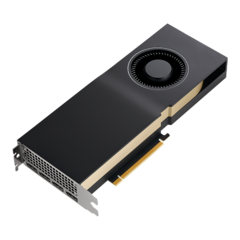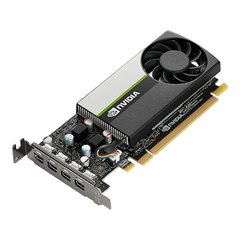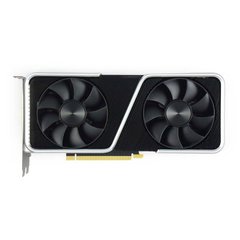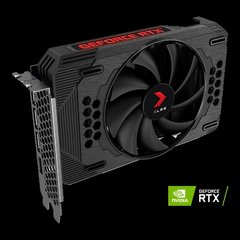NVIDIA T400 4 GB GDDR6 PCIe 3.0-Active (for system assembly) 4GB GDDR6 - 900-5G172-2240-000
Graphics Engine: Turing BUS: PCI-E 3.0 16x Memory size: 4 GB Memory type: GDDR6 Stream processors: 384 Theoretical performance: TFLOP
We can supply these GPU cards directly and with an individual B2B price. Contact us with your inquiry today.
All NVIDIA Ampere, NVIDIA Grace Hopper, NVIDIA Ada Lovelace and NVIDIA Blackwell GPU architectures are subject to a non-cancellable, non-returnable (NCNR) period of 52 weeks. Additionally, the product is subject to sanctions for certain countries and the end customer must be documented.
| Product code | 214.162440 |
|---|---|
| Part number | 900-5G172-2240-000 |
| Supermicro Part No. | GPU-NVQT400-4-SI |
| Manufacturer | NVIDIA |
| Availability |
In stock 0 pc
Stock allocation and delivery options
Transport company across Europe Friday 25. 7. at the latest Thursday 31. 7. |
| Supplier availability | In stock 119 pc |
| Warranty | 24 months |
| Weight | 0.3 kg |
| The price includes all legal fees | |
Detailed information
NVIDIA Server
NVIDIA's products present a range of professional graphics cards designed for both rackmount servers and powerful workstations. These are very high quality graphic products with large memory and a special set of drivers that are adapted to work in CAD and other professional applications as well as remote collaboration, virtual desktop, 3D visualization and rendering, but also for machine learning. Compared to desktop graphics cards, they are often also optimized for lower consumption.
1.094 TFLOPS
Turing
Graphics memory
VRAM, these days primarily of GDDR type, is a synchronous memory, similar to standard RAM. However, in the case of graphic memory, memory chips with faster throughput and multiple data transfer rates are concerned. The result is a much faster buffering of data that the graphics card or coprocessor calculates and passes to the processor.
4
GDDR6
CUDA Technology
Users of professional applications can benefit from CUDA graphics stream processors thanks to CUDA architecture. Thanks to this, the raw power of the graphics card can be used for specific calculations, which can accelerate the work manifold compared to a classic processor, which is significantly limited by a lower amount of cores.
384
Active
The active type of cooling is widespread mainly due to the reliable method of lowering temperatures. It is cooling by air flow, most often consisting of one or more fans and its goal is to help create a vacuum inside the case thereby significantly improving the air flow that takes heat away from the graphics card out of the case. Active cooling of graphics cards is divided into axial cooling, common for traditional gaming graphics cards and radial cooling, which uses longitudinal airflow. This type of cooling is used, for example, by TURBO version of graphics cards.
PCI Express
PCI Express is an interface that usually takes the form of an expansion slot to ensure the modularity of the entire system, whether it is GPU, network cards, controllers, m.2 drives or other expansion cards. It is true that the newer the generation and wider the interface, the higher the performance and throughput. Most modern graphics cards use 16 lanes to connect with the processor. Currently, the most up-to-date generation is PCI Express generation 4.0 with a speed of 2 Gb/s per lane.
Parameters
| Product line | Quadro |
|---|---|
| Architecture | Turing |
| Gigabytes of memory | 4 |
| Number of stream processors | 384 |
| Memory type | GDDR6 |
| Slot count | 1 |
| Monitor output | miniDisplayPort 3x |
| Profile | LP |
| Interface | PCI-E 3.0 16x |
| Cooling type | Active |
| Power consumption (W) | 30 |




























